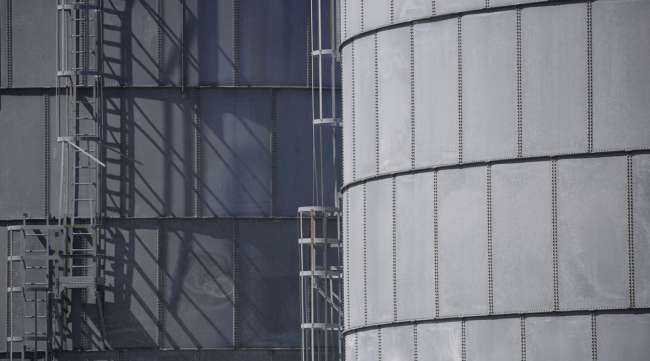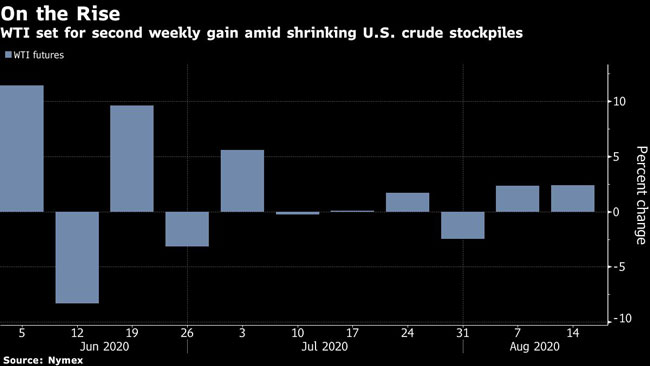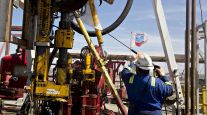Bloomberg News
Oil Set to Eke Out Weekly Gain With Virus Fears Capping Prices

[Ensure you have all the info you need in these unprecedented times. Subscribe now.]
Oil is poised to post a second straight weekly gain, buoyed by an improving global economic picture and rising U.S. gasoline demand.
U.S. industrial production increased for a third straight month in July. Elsewhere, China’s economic recovery continued last month, with industrial output growing at the same pace as June due to overseas demand, according to data released Aug. 14. Consultants are expecting the world’s biggest oil importer to boost its purchases for later in the year, potentially adding support to crude.
Earlier in the week, U.S. crude stockpiles declined after imports from Saudi Arabia dropped and gasoline consumption increased.

Futures are “hanging in there,” said John Kilduff, a partner at Again Capital. “We continue to draw down at a pretty decent clip in crude oil, and it looks like the Saudis are going to continue to hold back some of their supply to the U.S., making it look like things are tightening.”
Growing signs of a resurgence of the coronavirus has highlighted the patchy recovery in oil consumption, capping any price rally. A rebound in U.S. retail sales slowed sharply in July, indicating a surge in COVID-19 and still-high unemployment cooled the economic recovery. On Aug. 13, the International Energy Agency downgraded a majority of its demand forecasts for the next 18 months.
“There’s reasons to be optimistic, driving demand has gone up, and you’ve drawn some crude oil,” said Michael Hiley, head of over-the-counter energy trading at New York-based LPS Futures. However, “you’re one big spike away from reversing this thing right back down.”
The 3-2-1 refining margin for combined gasoline and diesel against WTI, which provides a rough gauge of profitability for processing a barrel of crude, continues to trade below $10 a barrel, its lowest seasonal level in almost a decade. With the pandemic wreaking havoc on gasoline demand during what is usually the summer driving season, the narrowing margin signals the decreasing appeal for refiners to buy up more crude.
In physical markets, WTI’s discount to Dubai narrowed 11 cents to -$1.30, its smallest since April 16, according to PVM.
Want more news? Listen to today's daily briefing:
Subscribe: Apple Podcasts | Spotify | Amazon Alexa | Google Assistant | More




